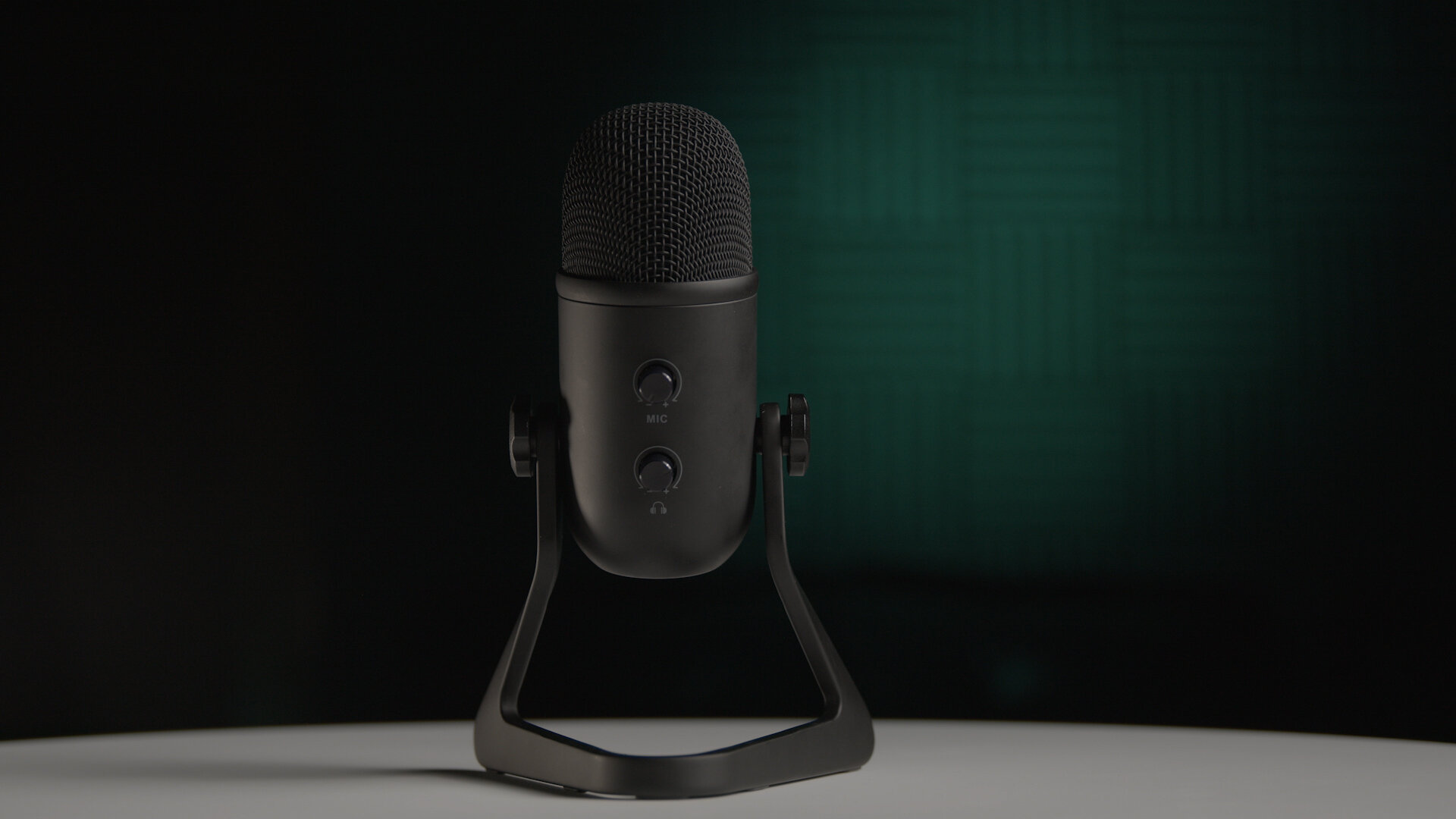Fifine K678 USB Mic Review and Comparison
While sound is sometimes an afterthought, clear, crisp audio is one of the most fundamental aspects of professional video production. When looking to upgrade the quality of videos, investing in high quality microphones is a great place to start.
Like most film equipment on the market, there are a variety of professional grade microphones to choose from, but finding the best value can be tricky. The Blue Yeti, according to their website, is seen as one of the best USB microphones on the market.
While The Blue Yeti has become the industry standard, a relatively new entry has hit the market in the form of the Rode PodMic. The Rode microphone was reviewed in a previous blog, as well as included in a podcasting package our company put together. (link to blog)
In order to properly compare the Rode Microphone against multiple options, this blog will also compare the Rode against the RE320, which is our company’s microphone of choice for voiceovers and general vocal recording. The comparison of microphones comes down to the difference in audio quality when using an XLR microphone versus a USB microphone.
The major difference with USB microphones, such as the FiFine K678 and the Blue Yeti, is they are primarily meant for desktop computers. Due to the design, if the user’s mouth is not within a few inches of the microphone, the sound quality immediately diminishes.
With that being said, both microphones come with mounting options. Both the FiFine and the Blue Yeti have a threaded insert on the bottom, which allows each microphone to be mounted on a boom arm.
While these two microphones are competing in the same market, the FiFine is actually quite a bit cheaper, with the FiFine retailing for around $50 less than the Blue Yeti.
But with this increase in price comes additional features for the Blue Yeti, such as a switchable pickup pattern- a feature that neither the FiFine or the Rode microphones have. This feature is unique to the Blue Yeti design.
Now it’s time to look at each microphone’s specifications to see how they stack up against one another.
Both the FiFine K678 and the Blue Yeti microphones interface with the computer. Whereas the Blue Yeti has its own proprietary software, the FiFine is immediately recognized by a computer when plugged in.
Both microphones record at 16 bit with a similar frequency response. However, the Yeti picks up 20 Hertz to 20,000 Hertz, while the FiFine starts at 40 Hertz and goes up to 20,000 Hertz, meaning there's a bit more sub-bass in the Blue Yeti.
Now it’s time for the comparison tests:
In order to properly compare and contrast the microphones, the same Zoom H6 was used as the USB interface for recording. Additionally, the same list of sentences was spoken into each microphone, in order to compare levels and overall quality.
After testing various sentences, it becomes immediately apparent that the Blue Yeti has a more pronounced low-end than the FiFine K678. On the other hand, the K678 sounds a little less muddy.
This difference is mostly likely due to the microphone placement. With many cardioid type microphones, there is a proximity effect where the closer you get to the microphone, the more low-end response you will pick up. Cardioid microphones are microphones that have an approximately uniform response over 180 degrees in front and minimum response in back.
However, by simply repositioning the microphone so it is closer to the speaker’s mouth, the proximity effect is improved.
The next test is an isolated microphone test, which means the microphone is about a fist from the speaker’s mouth. This test resembles recording a voiceover or a podcast.
At this distance, the Blue Yeti has a nice high-end crispness while still capturing the low-end parts of the voice. The FiFine K678, at the same distance from the mouth, picks up less of the low-end for a voice, but still sounds clear and crisp.
An important aspect to keep in mind is the FiFine microphone is nearly half the price of the Blue Yeti, while arguably sounding just as good in regards to voice fidelity. Fidelity refers to how accurately the microphone reproduces sound.
The next test involves plugging the XLR microphones into Adobe Audition and looking at the waveform. In order to accurately compare, all the different microphones are normalized to the same decibel. (For this demonstration, the microphones are normalized to negative 3 dB.)
Remember, when buying an XLR microphone, an interface will be needed to achieve the best sound. Also, utilize a cloud lifter to make sure preamplifier noise is not introduced into the signal.
When listening back to the various voice recording tests, the EV RE320 produced the best overall sound, followed by the FiFine K678, the Blue Yeti, and the RODE PodMic.
The FiFine K678 is a great option for voice overs due to its ease of use, great overall sound, and it's small footprint. Yet, the Blue Yeti offers more flexibility when it comes to recording options.
The final test examines how these microphones respond to a musical instrument, in this case, an acoustic guitar.
While the ideal microphone for recording an acoustic instrument lies somewhere between the FiFine and the Blue Yeti, the FiFine does the best overall job, producing crisp audio, while picking up the nuances of the instrument.
Each microphone comes with its own pros and cons, and ultimately it comes down to what the microphone will be used for. However, when looking for a microphone that can do a little bit of everything, the FiFine is definitely worth consideration.
While sound is often overlooked in favor of fancy cameras or fun gadgets, the foundation of professional video production is always good audio. Investing in solid audio equipment means less headaches in post production and a better final product overall.





